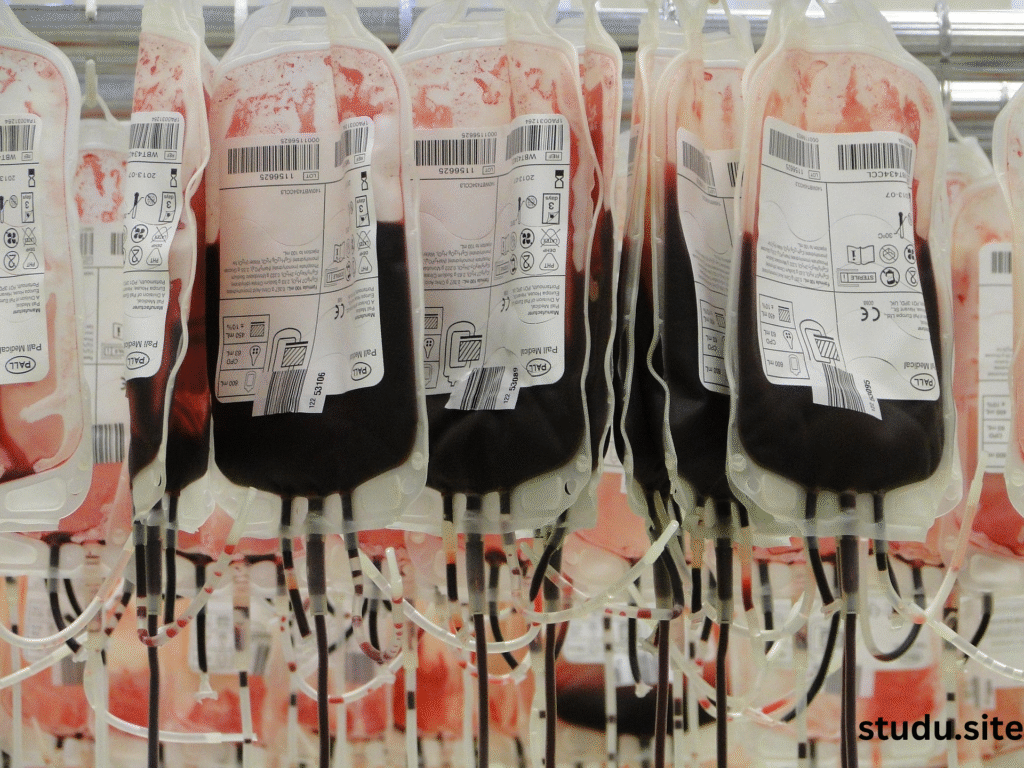Introduction: Understanding Blood in Dog Stool
Finding blood in dog stool can be alarming for any pet owner. Whether it’s bright red streaks or dark, tarry spots, bloody stool is a sign that something may be wrong with your dog’s digestive system. Though it may be triggered by something minor, such as changes in diet, it may also reflect a serious health problem that needs prompt veterinary care. This blog discusses the reasons behind dog stool blood, symptoms linked to it, when to panic, and how to proceed to guarantee your dog’s well-being. Learning about this condition will help you take action swiftly to ensure your furry companion’s safety and comfort.

Types of Blood in Dog Stool
Not every dog blood in stool appears the same, and how it looks can be a clue to the problem:
Bright Red Blood (Hematochezia)
Fresh, red blood visible on the surface of the stool or diarrhea usually comes from the lower part of the digestive tract, i.e., the colon or rectum.
Dark, Tarry Blood (Melena)
Black, tar-like stool shows digested blood from the upper part of the digestive tract, i.e., the stomach or small intestines.
Both are worth considering, but melena tends to indicate more severe illnesses. The American Kennel Club (AKC) says any stool with blood should be seen by a vet in order to determine the cause.
Common Causes of Blood in Dog Stool
Canine stool blood can be due to many different conditions, ranging from harmless to fatal. These are the most prevalent causes:
1. Parasites
Intestinal parasites are a common offender, particularly among puppies or those dogs who are exposed to contaminated environments.
-
Hookworms: These attach to the lining of the intestines and cause bleeding.
-
Roundworms or Whipworms: These cause irritation in the gut, producing bloody diarrhea.
-
Giardia or Coccidia: Protozoan parasites bring about inflammation and blood in stool.
Symptoms: Weight loss, diarrhea, lethargy, or worms seen in stool.
Solution: Deworming and fecal examination by a veterinarian regularly, along with parasite preventatives.
2. Dietary Issues
Sudden changes in diet, food intolerance, or swallowing inappropriate objects may irritate the digestive tract.
-
Spoiled Food: Consumption of garbage or spoiled food may lead to colitis (inflammation of the colon).
-
Foreign Objects: Intestinal scraping by bones, toys, or trash can lead to bleeding.
-
Rich Foods: Treats with a high content of fat or human foods such as pizza may bring on upset.
Symptoms: Vomiting, diarrhea, or straining to pass feces.
Solution: Provide a steady, high-quality diet and keep harmful materials out of reach.
3. Infections
Bacterial, viral, or fungal infections may inflame the gut and result in blood in stool.
-
Parvovirus: A deadly virus in unvaccinated puppies, resulting in bloody diarrhea.
-
Salmonella or E. coli: Food-borne or water-borne bacterial infections.
-
Leptospirosis: Bacterial infection of the liver and kidneys, occasionally resulting in melena.
Symptoms: Fever, lethargy, vomiting, or lack of appetite.
Solution: Immediate veterinary treatment for antibiotics, fluids, or antiviral medication.
4. Colitis or Inflammatory Bowel Disease (IBD)
Colitis, or inflammation of the colon, usually results in bright red blood and mucus in the stool. Chronic colitis can be a sign of IBD, which occurs frequently in breeds such as German Shepherds or Boxers. Stress, allergies, or infection can cause colitis.
Symptoms: Straining, small frequent stools, or mucus in the poop.
Solution: Anti-inflammatory medication prescribed by the vet, dietary adjustments, or stress relief.
5. Anal Gland Issues
Infected or impacted anal glands, situated close to the rectum, may result in bleeding during defecation, which may be confused with stool blood. Small dogs, such as Chihuahuas, are susceptible to this.
Symptoms: Scooting, licking at the backside, or stench.
Solution: Expression of glands by a vet or antibiotics for infection.
6. Trauma or Injury
Physical harm to the digestive system will bleed.
-
Rectal Injuries: Sharp bones or hard play.
-
Intestinal Blockages: Foreign objects perforate the gut.
-
Anal Tears: Due to straining or hard stools.
Symptoms: Painful defecation, lethargy, or vomiting.
Solution: Evaluation by the vet, possibly with X-rays or surgery.
7. Serious Conditions
More serious conditions will produce blood in stool and need immediate attention:
-
Hemorrhagic Gastroenteritis (HGE): Acute, severe bloody diarrhea in small breeds, such as Yorkies.
-
Cancer: Stomach, intestinal, or rectal tumors, more common in older dogs.
-
Ulcers: Due to drugs such as NSAIDs or stress, resulting in melena.
-
Clotting Disorders: Diseases such as rat poison poisoning or thrombocytopenia have a negative effect on blood clotting.
Symptoms: Pale gums, weakness, or collapse.
Solution: Immediate vet care, including testing such as ultrasounds or blood work.
Symptoms to Watch Out For
Stool blood is usually accompanied by other signs that can identify the cause. Watch your dog for:
-
Diarrhea or constipation
-
Vomiting or loss of appetite
-
Lethargy or weakness
-
Weight loss or fever
-
Straining or pain while defecating
-
Pale gums or rapid breathing
If any of these symptoms occur, particularly with masses of blood or melena, have an immediate veterinary visit.
When to Visit a Veterinarian
Although one isolated incident of bright red blood may be resolved on its own, the majority of episodes of dog stool with blood need to be seen by a professional. Have a vet visit if:
-
Blood persists after 24 hours
-
Your dog is experiencing diarrhea, vomiting, or lethargy
-
You observe black, tarry stools
-
Your dog is a puppy, geriatric, or has underlying conditions
-
There’s profuse blood or your dog appears to be in distress
The Veterinary Emergency Group recommends that bloody diarrhea with vomiting or lethargy is an emergency because parvovirus or HGE can kill your dog if treatment is not immediately sought.
What to Expect at the Vet
A veterinarian will conduct a complete exam to determine the reason behind the blood in your dog’s stool. Routine steps include:
-
Physical Exam: To determine if there’s pain, dehydration, or anal gland problems.
-
Fecal Test: To identify parasites or bacteria.
-
Blood Work: To check organ function or clotting disorders.
-
Imaging: X-rays or ultrasounds to determine blockages or tumors.
-
Endoscopy or Biopsy: For long-term cases to determine IBD or cancer.
Treatment varies based on the cause, ranging from dewormers and antibiotics to surgery or chemotherapy for extreme conditions.
How to Help Your Dog at Home
While awaiting veterinary care, take these steps:
-
Withhold Food Temporarily: Fast your dog for 12–24 hours (with vet approval) to rest the gut, but ensure access to fresh water.
-
Offer a Bland Diet: After fasting, feed boiled chicken and rice in small portions for 2–3 days to ease digestion.
-
Keep Them Hydrated: Encourage drinking to prevent dehydration from diarrhea.
-
Monitor Stool: Observe the quantity, color, and number of bloods to inform your vet.
-
Prevent Licking: Employ a cone to prevent your dog from licking infected areas, which may cause infections to escalate.
Avoid taking over-the-counter medication such as Pepto-Bismol unless under prescription by your vet, as they are harmful to dogs.
Prevention of Blood in Dog Stool
To prevent bloody stool:
-
Regular Deworming: Adhere to the parasite prevention recommended by your vet, particularly for outdoor dogs.
-
Balanced Diet: Provide high-quality, vet-approved food and nothing else.
-
Safe Environment: Trash, bones, and poisonous substances out of reach.
-
Routine Vet Visits: Yearly checkups catch problems early, particularly for seniors.
-
Vaccinations: Keep your dog current on shots such as parvovirus.
-
Stress Management: Give exercise and a quiet home to avoid stress colitis.
Myths Concerning Blood in Dog Feces
-
Myth: A small amount of blood is always harmless.
Fact: Even in tiny amounts, it can indicate serious problems such as ulcers or parasites. -
Myth: Straining is the only cause of blood in stool.
Fact: Straining does cause blood, but so do infection causes that must be eliminated. -
Myth: Home remedies always work.
Fact: Not all cases are resolved by home remedies. A lot of causes need to be diagnosed and treated by a vet.
Why Blood in Stool Has Importance
Forgetting about blood in your dog’s stool can cause worsening illness, from chronic infection to life-threatening disease such as cancer or HGE. Early action enhances results and avoids discomfort, particularly for breeds with a susceptibility to digestive ailments, such as Shih Tzus or Dobermans. Taking action quickly demonstrates your dedication to your dog’s well-being.
Conclusion
Blood in dog feces is a troubling symptom with causes ranging from simple dietary disturbances to severe conditions such as parvovirus or cancer. By observing the color of the blood, tracking symptoms, and seeking veterinary treatment as necessary, you can safeguard your dog’s health. At home, aid in recovery through a bland diet, plenty of hydration, and a comfortable environment, always giving precedence to expert recommendations. Have you seen blood in your dog’s stool? Leave your questions or experiences in the comments section below, and let’s keep our dogs healthy together!
